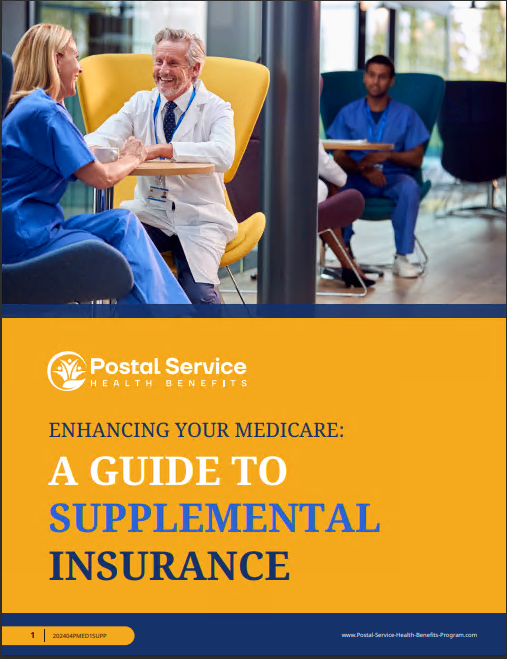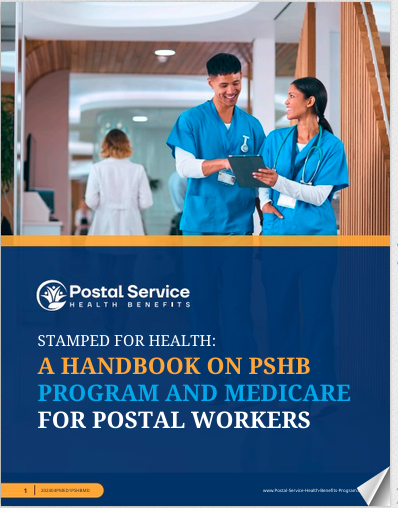Key Takeaways
-
Coordinating Postal Service Health Benefits (PSHB) with Medicare can enhance your healthcare coverage and reduce out-of-pocket expenses, especially for retirees.
-
Understanding how the two programs interact ensures you can make informed decisions during enrollment and Open Season.
Breaking Down PSHB and Medicare Integration
If you’re a Postal Service retiree, transitioning to the Postal Service Health Benefits (PSHB) program in 2025 means navigating a new chapter in healthcare coverage. Pairing your PSHB benefits with Medicare offers a seamless way to maximize your coverage and lower costs—but how does it all work? Let’s break it down, step by step.
The Basics of PSHB and Medicare
PSHB replaces the Federal Employees Health Benefits (FEHB) program for USPS employees and retirees. At the same time, Medicare remains the federal program for those aged 65 and older or those who qualify due to disability.
While PSHB provides comprehensive medical, dental, and vision coverage, Medicare adds a layer of benefits that can reduce your out-of-pocket costs, particularly for hospital stays, medical services, and prescription drugs. Medicare comprises three main parts:
-
Part A (Hospital Insurance): Covers inpatient care, skilled nursing facilities, and some home health services.
-
Part B (Medical Insurance): Covers outpatient care, doctor visits, preventive services, and durable medical equipment.
-
Part D (Prescription Drug Coverage): Covers medications, with a $2,000 out-of-pocket cap for 2025.
Why Pair PSHB with Medicare?
By enrolling in both PSHB and Medicare, you ensure that each program complements the other. For example, PSHB plans often reduce or waive deductibles, copayments, and coinsurance when paired with Medicare. This means fewer out-of-pocket expenses for you.
Additionally, PSHB plans typically include prescription drug coverage under Medicare Part D. With the 2025 introduction of the $2,000 cap on Part D out-of-pocket drug costs, retirees stand to benefit significantly.
Enrollment Timing and Requirements
When Should You Enroll in Medicare?
Most retirees become eligible for Medicare at age 65. You have a 7-month Initial Enrollment Period (IEP) to sign up for Parts A and B—this includes the 3 months before your 65th birthday, the month of your birthday, and 3 months afterward. If you miss this window, you could face late enrollment penalties.
If you’re already receiving Social Security benefits, you’re automatically enrolled in Medicare Part A and Part B. However, you can decline Part B if you’re still working or covered by a spouse’s employer plan.
The PSHB and Medicare Connection
Retirees eligible for Medicare are required to enroll in Part B to maintain PSHB coverage. However, some exceptions apply:
-
You retired on or before January 1, 2025.
-
You turned 64 or older before January 1, 2025.
Even if enrollment isn’t mandatory, combining PSHB with Medicare offers distinct advantages, such as reduced cost-sharing and improved prescription drug benefits.
Navigating Open Season for Plan Adjustments
The 2025 Open Season for PSHB runs from November 11 to December 13. This is your opportunity to review plan options, make changes, or enroll in PSHB if you haven’t already. During this period, you can:
-
Choose a PSHB plan that aligns with your Medicare enrollment.
-
Compare plan benefits, premiums, and cost-sharing details.
-
Confirm whether your preferred providers and medications are covered.
Changes made during Open Season take effect on January 1, 2026. If you miss this window, adjustments can only be made due to Qualifying Life Events (QLEs), such as marriage, divorce, or a change in employment status.
Coordinating Benefits: What You Need to Know
How Cost-Sharing Works
When you’re enrolled in both PSHB and Medicare, Medicare becomes your primary payer for most services. This means:
-
Medicare processes claims first.
-
PSHB covers remaining eligible expenses.
For example, if you visit a doctor, Medicare Part B covers 80% of the approved cost. PSHB steps in to cover the remaining 20%, often leaving you with no out-of-pocket cost.
Prescription Drug Coverage
PSHB plans include Medicare Part D coverage. With the elimination of the coverage gap (donut hole) in 2025, you’ll only pay up to $2,000 annually for covered medications before entering the catastrophic coverage phase. After that, your plan pays 100% of drug costs for the rest of the year.
Out-of-Pocket Maximums
PSHB plans have annual out-of-pocket maximums that cap your healthcare spending. For 2025:
-
Self Only plans: $7,500 for in-network services.
-
Self Plus One and Self & Family plans: $15,000 for in-network services.
These caps do not include Medicare premiums but do account for deductibles, copayments, and coinsurance.
Filing Claims and Managing Costs
With Medicare as the primary payer, claims are usually filed automatically. However, it’s essential to:
-
Confirm that your providers accept both Medicare and your PSHB plan.
-
Review Explanation of Benefits (EOB) statements for accuracy.
-
Contact your PSHB provider for any unresolved claims.
Tips for Retirees
Plan Ahead for Enrollment
Mark important dates on your calendar, such as your Medicare Initial Enrollment Period and the annual PSHB Open Season. Missing deadlines could mean higher costs or lapses in coverage.
Compare Plan Options
During Open Season, carefully compare PSHB plans to find one that aligns with your healthcare needs and Medicare coverage. Look for plans that:
-
Waive Part B deductibles.
-
Offer reduced copayments and coinsurance.
-
Cover your preferred doctors and medications.
Budget for Costs
While PSHB and Medicare reduce out-of-pocket expenses, you’ll still need to budget for:
-
Medicare Part B premiums: $185 monthly in 2025.
-
Deductibles and coinsurance for non-covered services.
-
Prescription drug costs up to the $2,000 annual cap.
Stay Informed
Regularly review your plan’s benefits and changes. PSHB providers send an Annual Notice of Change (ANOC) each fall, detailing updates to premiums, benefits, and cost-sharing.
Maximizing Benefits with Coordination
The key to making PSHB and Medicare work seamlessly is understanding how the two programs interact. By ensuring proper enrollment, selecting compatible plans, and managing claims, you can enjoy comprehensive coverage with minimal stress.
-
Medicare Part B Premium Reimbursements: Some PSHB plans offer partial reimbursements for your Medicare Part B premiums. Check with your plan to see if this benefit applies.
-
Access to Enhanced Benefits: Many PSHB plans include extra services, such as telehealth, wellness programs, and dental or vision coverage.
-
Flexibility During Special Enrollment Periods (SEPs): Life events like moving or retiring allow you to adjust your PSHB or Medicare plan outside regular enrollment periods.
Staying on Top of Changes
Healthcare coverage evolves, and so do your needs. By staying proactive, you can ensure your benefits keep pace with your lifestyle. Use resources like your PSHB plan’s member portal or Medicare’s online tools to:
-
Compare benefits.
-
Track spending toward out-of-pocket maximums.
-
Stay updated on any changes affecting your coverage.
Simplify Your Health Coverage Today
By integrating PSHB with Medicare, you’re setting yourself up for a more secure, cost-effective retirement. Understanding enrollment timelines, cost-sharing mechanisms, and plan options allows you to take full advantage of both programs. Take the time to review your benefits during Open Season and make choices that align with your health needs—because peace of mind is priceless.







